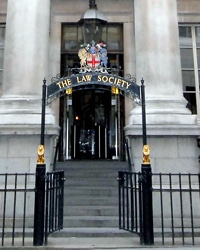The big City firms believe they are “way ahead” of the Law Society on diversity and inclusion, a report for the society has found.
However the report, which studied lesbian, gay, bisexual and transgender (LGBT) networks in law firms, found that the only network that had “heard of and supported” the victim of a homophobic comment was at a large City firm.
Researchers found that the “vast majority of people” interviewed had “no contact with the Law Society”, and several were not aware of the society’s diversity and inclusion charter or that their firms had signed up to it.
“Most of the big law firms based in the City were of the opinion that they ‘were frankly, way ahead of the Law Society on all of this stuff’, and saw that the role of promoting LGBT diversity and inclusion in the big law firms in London was already occupied by Stonewall and InterLaw.”
Researchers carried out interviews at 21 firms last March and April, 13 of which were based in London and 11 big City firms. Most of the firms described their networks as ‘LGBT’, but none had transgender members.
The report found that the diversity of a firm’s staff was “not reflected” in membership of its network.
“Networks felt that non-fee-earning and support staff (typically women) were under-represented in their memberships. Whilst some networks had lesbian and bisexual women members, the majority of participants were gay men.
“This reinforces previous research where lesbians felt they got nothing from networks stratified on the basis of gender and/or sexual orientation; instead they sought groups based on common hobbies/interests, areas of practice or career progression.”
The existence of a network was seen as a “symbolic marker” of how open a firm was to gay and lesbian staff. More than one interviewee reported that the network met off-site and “communicated via private web pages or confidential helplines” to protect those who chose not to be out at work.
“Several of the networks said that they made sure posters went up in common office spaces such as cafeterias or elevators. Others increased visibility by having rainbow-themed mugs or mouse-pads.
“Yet interviewees did acknowledge that it was a fine line between having a visible presence and turning a serious message into a gimmick.”
Big and small firms in London and those outside the capital agreed that the Law Society had a role in promoting equality and diversity outside the City.
Suggestions included setting up meetings or social events in the regions, running networking events, advising firms how to set up LGBT networks and organising courses which would count towards CPD.
Law Society president Andrew Caplen said feedback from members involved in the running of their firm’s networks was “invaluable to the Law Society in helping us address the priorities” for the year ahead.
“Employee networks are essential for creating inclusion, improving policies, creating a welcoming workplace and mentoring new recruits,” he said.















Leave a Comment